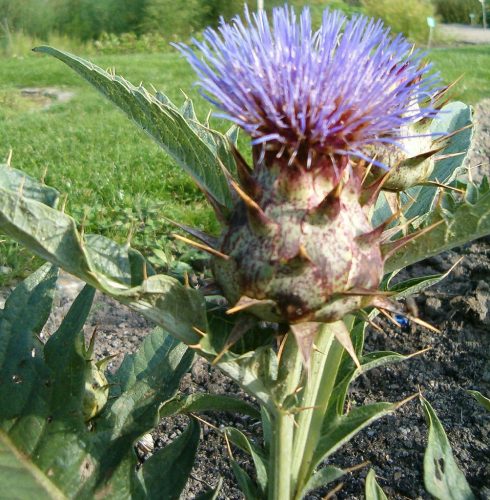Artichoke belongs to the composite family (Asteraceae) and originates in the Mediterranean region.
Also known as:
French artichoke
Green artichoke
You are viewing the mobile-adapted version of the page.
The one for tablets, laptop and desktop also provides general information, such as origin and cultivation.
Artichoke (Cynara scolymus L.) belongs to the composite family (Asteraceae) and originates in the Mediterranean region. Not an easy cultivation. Sow in March/April under glass, in the greenhouse or on the windowsill. Need heat to germinate. When the seed has germinated, do not immediately plant in the garden, but first pot it up and let it get used to our cool climate in a sheltered place. Only plant in the ground at the end of May in a sheltered, sunny spot. Artichokes are sensitive to frost. Covering is then necessary. Artichokes are perennial and not hardy. In winter it is advisable to cover the rhizomes. Harvest in August/September, but not in the first year.
Fungi & diseases
Roots rot; leaves and stems die: Fusarium wilt (Fusarium oxysporum), Phytophthora or Rhizoctonia.
Black or orange spots on the roots and silver-grey spots turning to brown: Parsnip canker (Itersonilia pastinacae).
Wet, rotten spots at the bottom of the stem: Fusarium foot rot (Fusarium solani).
Other
The leaves are yellowing – often this is the result of overwatering. Artichoke does not like to stand in soggy soil, the roots will rot if the soil is too wet. Do not water too much artichokes (in pots and in the ground). A good splash of water every week during the growing season is enough to keep the soil moist. In dry periods also keep the soil slightly moist.


